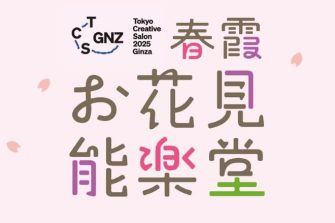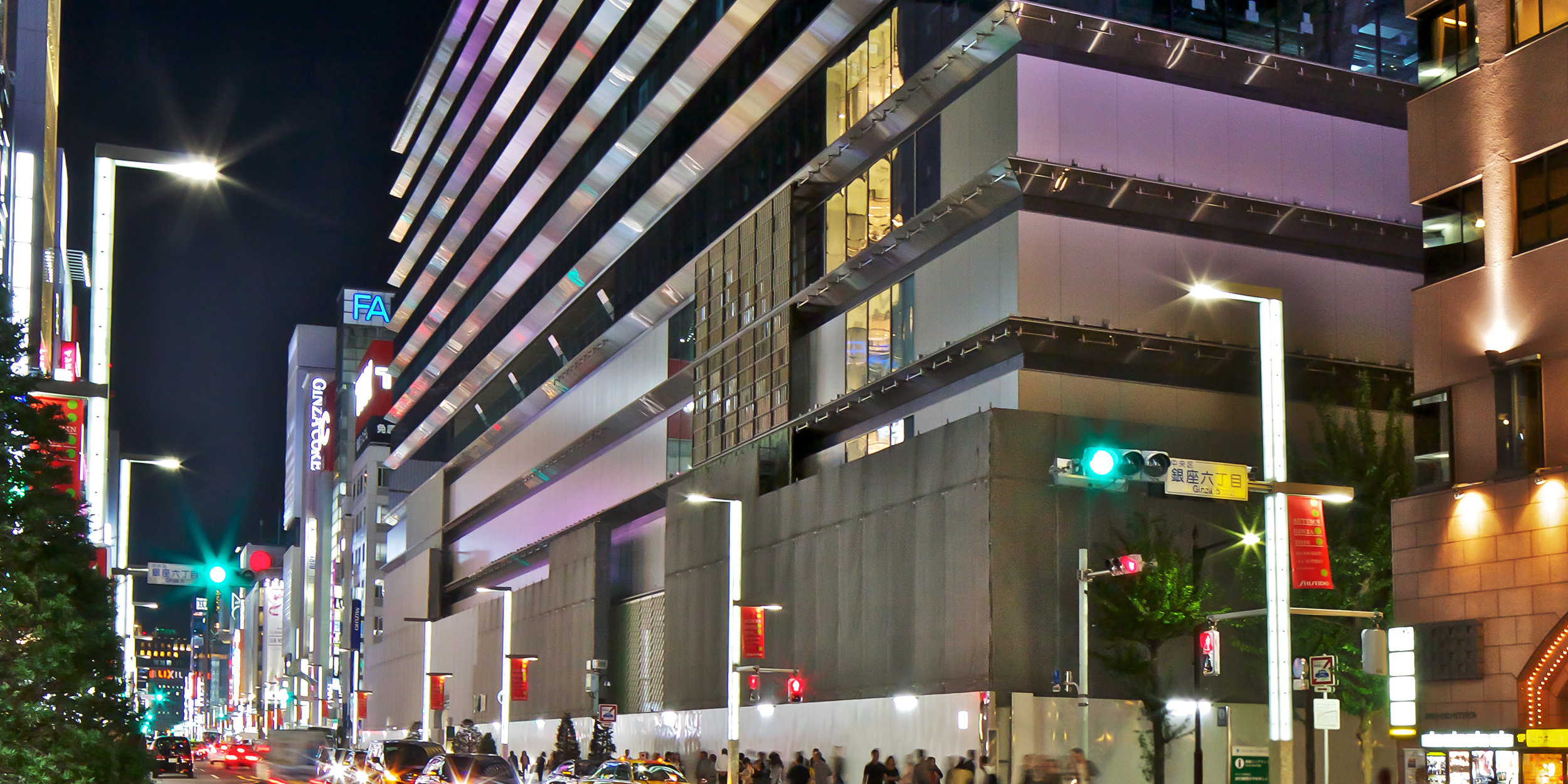
商业建筑的理想是不变与变的共存 Commercial Architecture is a Balance of Constants and Variables
ARCHITECTURE
谷口吉生
“屋檐”和“门帘”所要表达的含义
“建筑是为人类而生的容器”
设计GINZA SIX建筑的日本代表性建筑师谷口吉生常用上述概念突显“容器的内容”,追求建筑美学。谷口将历史、痕迹等用地条件与作为使用者的人类的关系放在第一位考虑,这次他重点负责建筑物的外观、以及初期阶段的城市设计。无论哪种,最大的课题都在于这是超越单座大楼的设计,需善用附近的重新开发,也就是活用GINZA SIX最大特色:规模。另一方面,建造GINZA SIX如此巨大的建筑物,必须避免阻断人们原来在银座街道中行动的路线。
因此,在建筑层面,谷口先生首先提出了“屋檐”的建议,这是体现GIZNA SIX庞大的象征。正因为GIZNA SIX的规模巨大,为了从银座所有街道看到建筑物时,一眼就能辨别出是GINZA SIX,所以在办公区的每个高楼层都设计了一圈不锈钢“屋檐”,通过此种方式展现出水平方向的一致性。相应地,占据底楼层的商业空间中,提出将并排位于中央大道上的六个品牌的正面设计成“门帘”的建议。“门帘”与“屋檐”相互呼应,将建筑物按垂直方向划分为较小的区块,方便人们进入建筑物中,同时还体现出建筑物与银座各小街小巷相连的规模。
“建筑的价值当然最好是能够永久保持下去。另一方面,对于像GINZA SIX这种商业建筑,最理想的是可根据时代变化和流行趋势,在店铺外观或标志上立即做出更换。特别是商业建筑中,需要的就是这种变与不变的共存。统一建筑整体的“屋檐”是不变的部分,安装在“屋檐”下的“门帘”则是变的部分。哪怕几十年后,GINZA SIX建筑的重要部分不锈钢“屋檐”仍将永远和现在一样,持续映射出街道的景象,而根据不同品牌而自由设计的“门帘”则随着时代而不断演变下去。这种景致最为理想。”
On the Significance of Eaves and Noren
"Architecture is meant to be a vessel to house human beings."
The architecture of GINZA SIX was designed by the renowned Japanese architect Yoshio Taniguchi, who has strived throughout his distinguished career to imbue his vessels with the kind of architectural beauty that elevates its contents. Taniguchi values two things above all else: the history and vestiges of memory that persist at a particular building site, and the relationship between a building and its intended users. For GINZA SIX, he has designed the building's exterior and prepared the initial urban plan. In both cases, his main challenge was to present a vision that went beyond a single building and embraced GINZA SIX's full scope as a redevelopment project on the grandest scale. At the same time, the new building was not to disturb the existing flow of pedestrian traffic through the surrounding streets of Ginza.
To meet these goals, Taniguchi proposed using eaves to make an architectural statement that captured GINZA SIX's scale. Due to its size, the building would be visible from practically any street in Ginza, and needed an element that would make it instantly recognizable. The stainless steel eaves run around the upper levels where the offices are located to create horizontal uniformity. For the shopping mall that occupies the lower levels, Taniguchi proposed that the six brands on the ground floor facing out onto Ginza's main shopping thoroughfare Chuo-dori put up unique facades with designs inspired by the Japanese tradition of stores putting up noren, entrance curtains decorated with low-key motifs like the store's logo or crest. In contrast to the horizontal lines of the eaves, the facades divide the building into smaller segments that are more inviting and reminiscent of the world that lies in Ginza's intricate network of side streets and back alleys.
"In a perfect world, the value of a building would remain unchanged over time. But in the case of commercial architecture such as GINZA SIX, it's ideal that the exterior elements and any signs can be easily modified or replaced to keep up with the times and changing trends. In commercial architecture, there needs to be a balance of constant elements and variable elements. So the eaves are a constant that ties the architecture together, and the 'noren' being put up are variables that are meant to be changed. Architecturally speaking, I see the stainless steel eaves as the backbone of GINZA SIX, which will be a permanent fixture of the Ginza skyline, while the 'noren' will change along with the times."
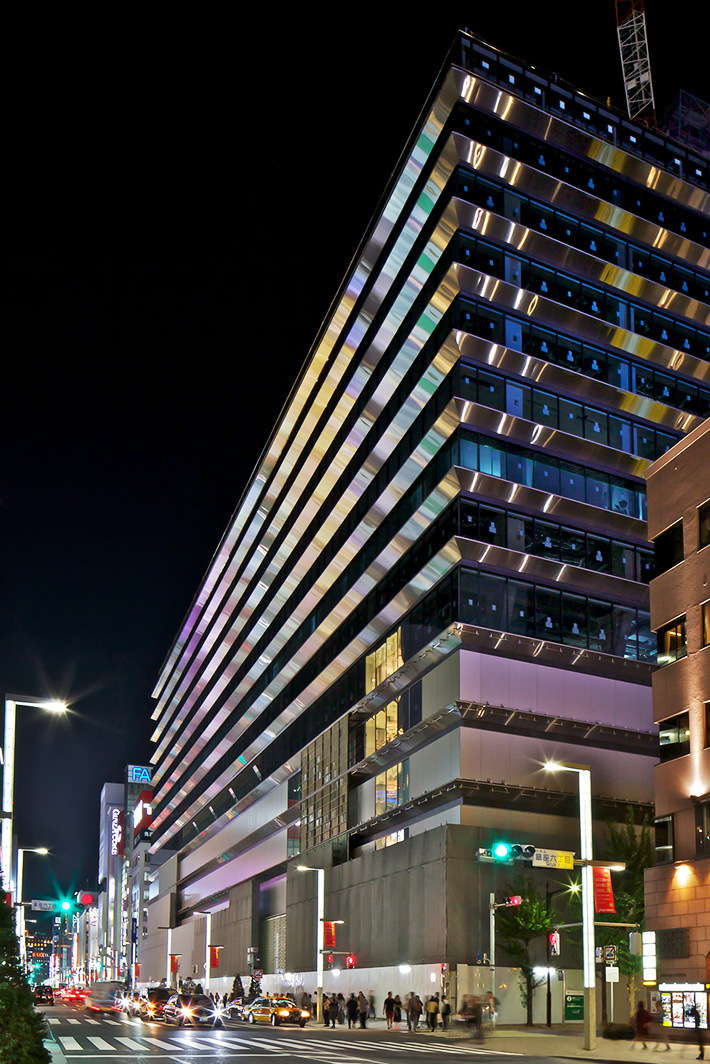
但是GINZA SIX是标准之外的规模,因此需要将包括建筑正面中央大道与背面三原大道之间的ADUMA大道在内的两个街区合二为一,重新进行开发。谷口初期参与的城市设计中,将ADUMA大道换成了三原大道一侧,地上部分则为公园。然后再将地上部分作为观光用的巴士中转站,在上面设置平台,规划成空中花园般的空间。
顺带提一句,三原大道过去曾是生长柳树的东京湾码头。“秉承设计者的道德规范,重要的是在满足客户各种要求的同时,不忘考虑周围环境。”绿色平台可以将中央大道的行人引导至三原大道,进而将行人分散到周边的街道中,同时也满足了附近对环境提出的一项要求──“希望有一处有自然、有水的休息场所”。
三原大道一侧也设置了办公区入口。从中央大道前往GINZA SIX的人们主要目的是包括购物在内的非日常性活动。但对于上班族而言,GINZA SIX终究只是日常性场所。“前往办公区的人当中,或许有和购物毫无关联的人。另一方面,中央大道一侧是日本商业的宝地。正因为如此,分别赋予三原大道一侧和中央大道一侧不同的风景,也许更好吧。”
Incidentally, GINZA SIX's grand scale is due to the fact that it is a redevelopment project that will integrate a two-block area originally bisected by Azuma-dori into one, bordered by Chuo-dori in the front and Mihara-dori in the back. In the initial urban plan Taniguchi contributed to, a strip of land the size of the displaced segment of Azuma-dori was to be made a park along Mihara-dori. Later it was decided that the strip would be made an above-ground terminal for tourist buses, with a deck built over it envisioned as a garden in the sky.
Historically, the Mihara-dori area was lined with willows and served as a dock for boats coming into Tokyo Bay. "It is my obligation as designer to meet the various demands of the client, but I also believe that it is my duty to be sensitive to the neighborhood surroundings." The garden deck is meant to draw the crowds on Chuo-dori towards Mihara-dori, dispersing pedestrian traffic into the surrounding streets, but it is also an answer to local requests for "a local oasis with some nature and water."
On the Mihara-dori side we've set up an entrance for the offices on the upper floors. While the people that come to GINZA SIX from Chuo-dori will be looking to enjoy shopping and experience something out of the ordinary, office workers will come to GINZA SIX as part of their day-to-day lives. "It's important to recognize that there may be some people who work in the offices that have nothing to do with the shopping mall. At the same time, the area along Chuo-dori is Japan's most prized commercial real estate. So I felt that we needed separate entrances along Mihara-dori and Chuo-dori."
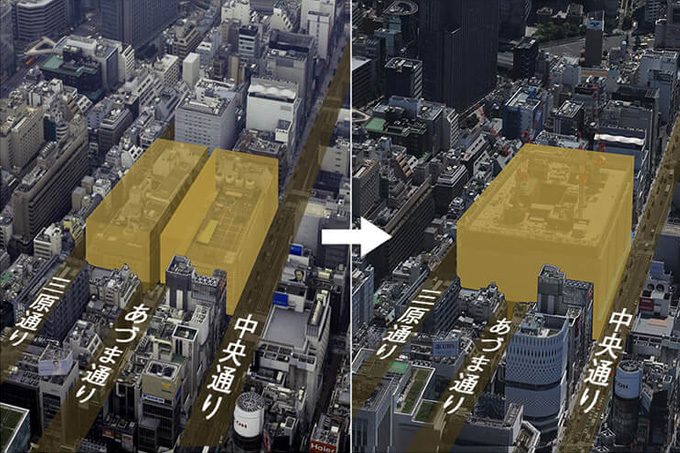
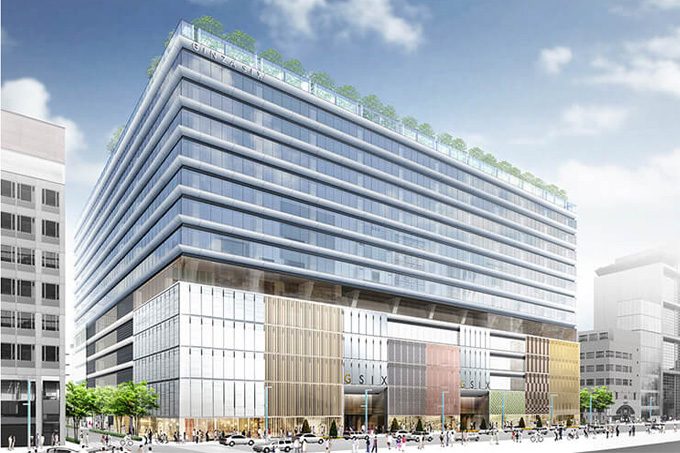
在谷口个人的记忆中,“漫步于银座”这个词象征着银座是为行人而存在的,同时也让人感觉到银座跨越时代的潜力。
“小学三年级,我从疏散地回到东京时,有乐町车站被燃烧弹烧毁,被称为木板屋的小摊成排地排列在银座街道上。但是和现在相比,当时有当时的乐趣和活力。在第二次世界大战结束后的第72个年头里,GINZA SIX诞生了,但是作为一个商业中心,蕴含“银座闲逛”这个关键词的历史仍然传承至今,从当时到现在均未改变,这点非常值得赞赏。我认为建筑在创新的同时,将这样的历史连系起来也是非常重要的。
将回忆刻画于GINZA SIX的主人公就是成为谷口口中“容器的内容”的我们。每个人的记忆也继续将银座传承给未来。
Then there's the word gin-bura, a contraction of a phrase that means "to enjoy a stroll through Ginza." The term has special significance for Taniguchi, who believes it speaks to Ginza's timeless potential. "When I was finally able to return to Tokyo after the war ended, Yurakucho Station had been destroyed by the firebombing of Tokyo, and the streets of Ginza were lined with makeshift street stalls that were called 'barracks'. But even amid the disarray, there were things to keep us entertained, a different energy about town. GINZA SIX may be opening its doors 72 years after the end of the war, but Ginza's legacy as a commercial hub has been celebrated and passed down through the generations to this day—and gin-bura has always been a part of that. Architecture is the creation of new environments, but it is also important that it carries history and heritage to the future."
The heroes whom Taniguchi has tasked with looking after the vessel's contents are you and me; the memories that each of us make at GINZA SIX will carry Ginza's legacy into the future.
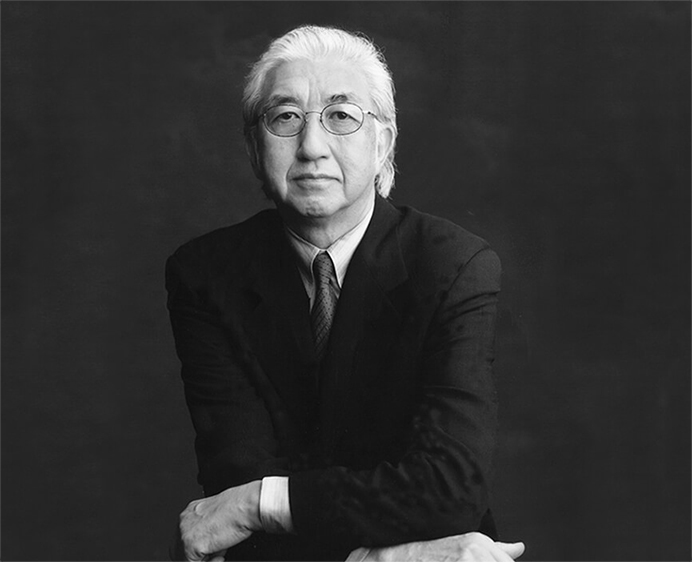
谷口吉生
1937年出生于日本东京。在哈佛大学学习建筑设计,曾在丹下健三门下积累经验。主要作品包括:“东京都葛西临海水族园”“东京国立博物馆法隆寺宝物馆”“纽约近代美术馆”“京都国立博物馆平成知新馆”等。目前参与“东京大仓酒店”新馆的项目,同时在其父建筑师谷口吉郎出生地(金泽)正在开展博物馆建筑项目等。
Yoshio Taniguchi
Born in Tokyo in 1937, Yoshio Taniguchi studied architecture at Harvard University before working for several years under architect Kenzo Tange. His best-known designs include Tokyo Sea Life Park, Gallery of Horyuji Treasures at Tokyo National Museum, The Museum of Modern Art in New York, and the Heisei Chishinkan Wing of Kyoto National Museum. His current projects include the design for the new Hotel Okura Tokyo, and an architectural museum in Kanazawa—the birthplace of his father, architect Yoshiro Taniguchi.
(2016年10月采访)
Interview and Text by Yuka Okada / Photograph by Toshiharu Kitajima







